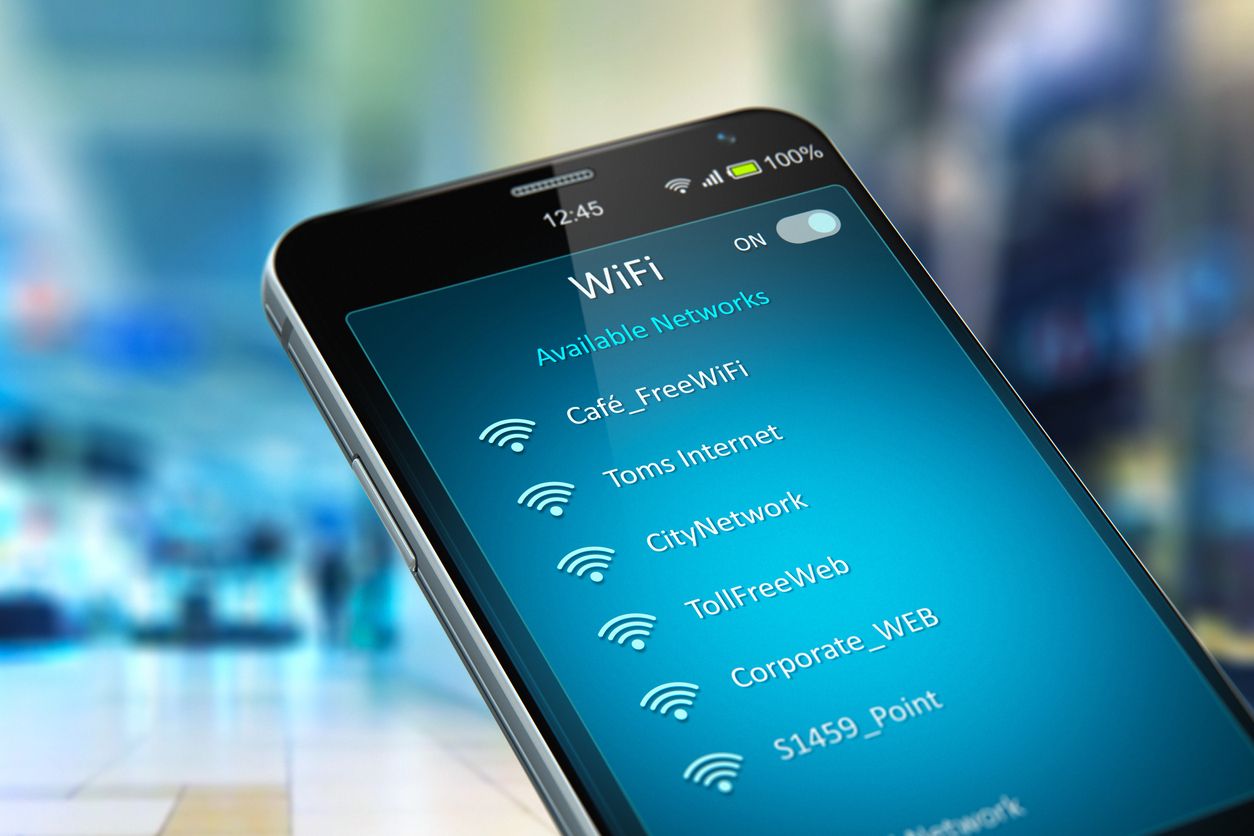eSIMs vs Physical SIM: Pros & Cons Of Each
What's the difference, and which to use?
Summary
- Pros & Cons of eSIM vs. Physical SIM
- Does eSIM provide faster speeds than a physical SIM?
- Do eSIMs have weaker reception compared to physical SIMs?
- Security & Privacy: Is eSIM Safer Than a Physical SIM?
- Physical SIM cards or eSIMs: Which should I use?
- Which phones & devices support eSIM?
- Get a Nomad travel eSIM for your next trip

As mobile technology continues to evolve, the introduction of eSIMs offers users a modern, convenient alternative to the traditional physical SIM card. Are you one of the many who are considering your options — should you stick with the traditional physical SIM card, or would a switch to eSIMs be better for you? And would the answer be different for a primary line and for travel? Let's take a closer look at the key differences between eSIMs and physical sim cards.
Key Differences: eSIM vs. Physical SIM
When comparing eSIMs and physical SIM cards, there are several key factors to consider, including form factor, activation process, device compatibility, network switching, security, convenience, and travel benefits.
- Form Factor & Activation: An eSIM is embedded directly into the device, eliminating the need for a removable plastic card. It is activated remotely via a QR code or an app, making setup seamless. In contrast, a physical SIM requires manual insertion and removal, which can be inconvenient when switching devices.
- Device Compatibility: eSIM technology is primarily found in newer smartphones, tablets, and smartwatches, while physical SIMs are universally supported across all mobile devices, including older models.
- Network Switching: One of the advantages of an eSIM is the ability to switch between carriers instantly, without the need for a physical SIM swap. On the other hand, switching networks with a physical SIM requires physically removing and replacing the card.
- Security & Convenience: In terms of security, eSIMs offer better protection since they cannot be easily stolen or cloned like physical SIM cards. Additionally, they eliminate the need for physical handling, providing a more hassle-free experience. However, physical SIMs offer the benefit of being easily transferable between different devices.
- Travel Benefits: For frequent travelers, an eSIM is particularly beneficial as it allows users to easily switch to international plans without purchasing or swapping a SIM card abroad. In contrast, physical SIMs require travelers to buy and insert a local SIM card when abroad, which can be less convenient.
Pros & Cons of eSIM vs. Physical SIM
Advantages of eSIM
- Convenience: Activate a mobile plan remotely without visiting a store. It eliminates the need for handling small physical SIM cards, reducing the risk of loss or damage.
- Supports Multiple Profiles: Store multiple eSIM profiles on a single device, making it easy to switch between personal and business lines. Ideal for frequent travelers who need seamless access to different carrier networks.
- Better Security: Unlike physical SIMs, eSIMs cannot be lost, stolen, or physically swapped, reducing the risk of unauthorised access. They are also harder for hackers to clone, offering enhanced protection against SIM swap fraud.
- Ideal for Travelers: Easily switch between local and international carriers without swapping SIM cards. Downloading a local eSIM plan allows instant connectivity, avoiding the hassle of purchasing and inserting a new SIM abroad.
- Eco-Friendly: Reduces plastic waste by eliminating the need for physical SIM production and packaging. Supports sustainability efforts by minimizing electronic waste.
Disadvantages of eSIM
- Limited Device Compatibility: Not all smartphones, tablets, or mobile hotspots support eSIM technology. Many older or budget-friendly devices still rely exclusively on physical SIMs.
- Carrier Support Variability: Some mobile providers do not yet support eSIM, especially in smaller markets. Certain carriers also limit eSIM activation to postpaid plans, restricting options for prepaid users.
- More Complicated Device Transfers: Unlike physical SIMs, eSIMs cannot be removed and inserted into another device. Transferring an eSIM requires reactivation, which varies by carrier and can be time-consuming.
Advantages of Physical SIM
- Widespread Compatibility: Works with virtually all mobile devices, including older models, basic phones, and non-smart devices. No need to check for compatibility, as physical SIMs are universally supported.
- Easier Device Transfers: Easily move a physical SIM between devices without requiring reactivation or additional setup. This makes it convenient for switching to a backup phone or sharing a SIM between multiple devices.
- No Internet Required for Activation: Unlike eSIMs, physical SIMs can be activated without an internet connection. This is especially useful in areas with poor network coverage or in emergency situations.
Disadvantages of Physical SIM
- Risk of Loss or Theft: Physical SIMs can be lost, stolen, or swapped, increasing the risk of unauthorised access. Fraudsters can use SIM swap scams to hijack phone numbers and access sensitive accounts.
- Less Convenient for Network Switching: Changing carriers requires manually swapping SIM cards, which can be inconvenient. Travelers must carry multiple SIMs for different regions and physically replace them when needed.
- Plastic Waste: Contributes to electronic waste due to plastic SIM cards, packaging, and SIM trays. Compared to eSIMs, physical SIMs have a greater environmental impact.
Does eSIM provide faster speeds than a physical SIM?
eSIMs and physical SIMs deliver the same data speeds. The performance of mobile data depends on factors such as the carrier’s network infrastructure, device capabilities, and location, rather than the type of SIM used.
Factors That Affect Mobile Data Speed (for Both eSIM & Physical SIM)
- Network Type & Coverage: 5G networks provide significantly faster speeds than 4G LTE, 3G, or 2G. If a carrier has weak coverage in a specific area, both eSIM and physical SIM users will experience slow speeds regardless of their SIM type.
- Carrier Network Congestion: During peak usage hours, data speeds may slow down due to high traffic on the network. Some carriers also implement prioritization policies, where premium plan users receive faster speeds than those on budget or prepaid plans.
- Device Antenna & Modem: Newer devices equipped with advanced modems and antennas (e.g., Qualcomm X70 in modern smartphones) handle data speeds more efficiently. Older devices may struggle with slower speeds, regardless of whether they use an eSIM or physical SIM.
- Network Prioritization & Throttling: Some prepaid or international eSIM plans may impose speed limitations, such as restricting data to 3G or capping bandwidth. In contrast, physical SIMs from major carriers often receive higher priority speeds on local networks.
Do eSIMs have weaker reception compared to physical SIMs?
No, eSIMs and physical SIMs offer the same signal strength. Network reception is primarily determined by factors such as carrier coverage, the quality of the device’s antenna, and proximity to cell towers—rather than the type of SIM used. The network performance is identical for both eSIM and physical SIM, as they both connect to the same mobile network infrastructure.
Security & Privacy: Is eSIM Safer Than a Physical SIM?
eSIM technology offers several advantages when it comes to security and privacy, making it a safer option compared to traditional physical SIM cards. While not completely immune to eSIM hacking, they are generally more secure for various reasons. To compromise an eSIM, an attacker would need to breach the carrier’s system rather than physically steal the SIM, making it harder to exploit.
Advantages of eSIM in Security
- No risk of SIM swapping: Since eSIMs are embedded within the device, there is no physical SIM card to steal, eliminating the common threat of SIM swap fraud.
- More secure provisioning: eSIM activation requires authentication from the carrier, adding an extra layer of security to prevent unauthorized access or activation.
Physical SIM Security Risks
- SIM swap fraud: Attackers may attempt to deceive a carrier into transferring a victim’s phone number to a new SIM, enabling access to sensitive accounts.
- Cloning: Physical SIMs can be cloned using specialized equipment, allowing attackers to duplicate the SIM and intercept calls, texts, and other sensitive data.
Physical SIM cards or eSIMs: Which should I use?
Before you consider which you should use, the first thing you probably should ask is whether your device is eSIM-compatible and if your carrier supports eSIMs for your device.
Most modern flagship devices today are eSIM-compatible, but if you were using an older device, it is still best to confirm if your device supports eSIMs. If your device is not eSIM-compatible, then physical SIM cards would be your answer!
Conversely, if you were on an eSIM-only phone, then your only option would be to use an eSIM.
Now, assuming you have a device that can support both physical SIM cards and eSIMs, then you might wonder which you would use.
We wished there was a straightforward answer, but it ultimately really depends on what matters to you.
For your primary line
Let's first take a look at what it means to use a physical SIM or an eSIM for your primary line, on the pretext that your carrier provides eSIM support for your primary line and device.
One of the biggest advantage of using a physical SIM card is in the case where you want to change phones. Simply remove the SIM card from your old phone and insert it into your new device, and you're set to go.
On the other hand, with eSIMs, transferring of eSIMs across devices might not be straightforward. While both iOS and Android devices are moving towards supporting transfer of eSIMs across devices, telcos may not always support it. If your telco does not allow you to simply transfer your eSIMs, then each time you change devices, you will need to call up your telco and get them to make the switch for you.
Now, if you were to use a physical SIM on your device for your primary line, that also means that you would be using up one physical SIM slot. Which, in case your device has a dual SIM slot, it might not be a big deal.
But, if your device only has a single SIM slot (as with iPhones and Samsung Galaxy Z Flip phones), then your primary line will be taking up that sole SIM slot. What that also means that if you wouldn't be able to have 2 lines (assuming both are on physical SIMs). It also means that if you were to get a local prepaid SIM card when traveling, you will need to remove your primary SIM card from your device and you wouldn't be able to have your primary line active.
For traveling
eSIMs have been a very convenient and increasing popular option for travelers, for the simple reason that it is very convenient.
With physical SIM cards, you will have to be physically present at a store to purchase the physical SIM card - or you will have to order them in advance and have them sent to you. Either way, this means time spent waiting for you to get your SIM card. If you were using an eSIM, you can simply purchase online, get the installation code, and install it on your device. The whole process would take less than 5 minutes.
If you were using eSIMs for your travels, it also means that you would be able to still keep your physical SIM card in your phone and active. You don't have to fumble with your SIM tray or risk losing your physical SIM card - assuming you had one. Another advantage of eSIMs for traveling is that it is easy for you to switch between eSIMs if you're traveling across countries. Instead of constantly changing SIM cards, you can switch between eSIMs in just a few taps of your device.
Sounds great, doesn't it?
But, here's the catch. Not all telcos offer eSIM options for prepaid or tourist plans. That essentially means that if you wanted to get an eSIM from a local operator, it might not always be possible. In such cases, your options will be to either get a physical SIM card or a travel eSIM from a provider of travel eSIM.
Travel eSIMs vs local SIM cards
If you are down to deciding between travel eSIMs and a local physical SIM card for your travel, here are a few factors to help you decide.
- Convenience: If you only need data and value convenience, travel eSIMs are often a much better decision.
- Service: Travel eSIMs often only include data and no local number. So if you need a local number, then a local SIM card might be what you are looking for.
- Price: The prices could vary. In some destinations, travel eSIMs are more affordable than getting a local SIM; and in other destinations, a local SIM is cheaper. Check out the different telco websites or travel blogs to help you make a price comparison.
Which phones & devices support eSIM?
As eSIM technology continues to grow, many modern devices are now compatible, making it easier for users to take advantage of its benefits:
Smartphones with eSIM Support
- Apple iPhone: iPhone 14, 13, 12, 11, XS, XR, and newer models.
- Samsung Galaxy: S24, S23, S22, S21, Z Fold, Z Flip series, and newer.
- Google Pixel: Pixel 8, 7, 6, 5, 4 series, and newer.
Tablets & Laptops with eSIM
- iPads: iPad Pro (11-inch and 12.9-inch models), iPad Air (4th and 5th generations), iPad Mini (6th generation and newer).
- Windows devices: Microsoft Surface Pro X, Lenovo ThinkPad X1 Carbon (8th gen) and other models with eSIM support.
Smartwatches with eSIM
- Apple Watch: All Cellular models from Series 3 and newer.
- Samsung Galaxy Watch: LTE versions of the Galaxy Watch 4, 5, and newer.
Get a Nomad travel eSIM for your next trip

Nomad offers data plans in over 200 countries, and you can be sure to find one that is suitable for your travel needs. And if you will be traveling across multiple countries, there are also regional plans available so you can stay seamlessly connected as you hop between countries. Data plans are available from as low as $1.10/GB.
The networks that Nomad's eSIMs use for each plan are stated on the plan details on the web store and apps, so you can check which networks are supported before buying your plan.
And, if you are unsure about how much data you need for your trip, Nomad also has a Data Calculator that can help you find the plan that is most suitable for you. Also check out our blog post on data-saving tips when traveling to keep your data usage in check when traveling.
Nomad also has a 24-hour customer support team. So, in the event where you face difficulties while using your eSIM, rest assured there will be someone available to help you resolve your issues!



